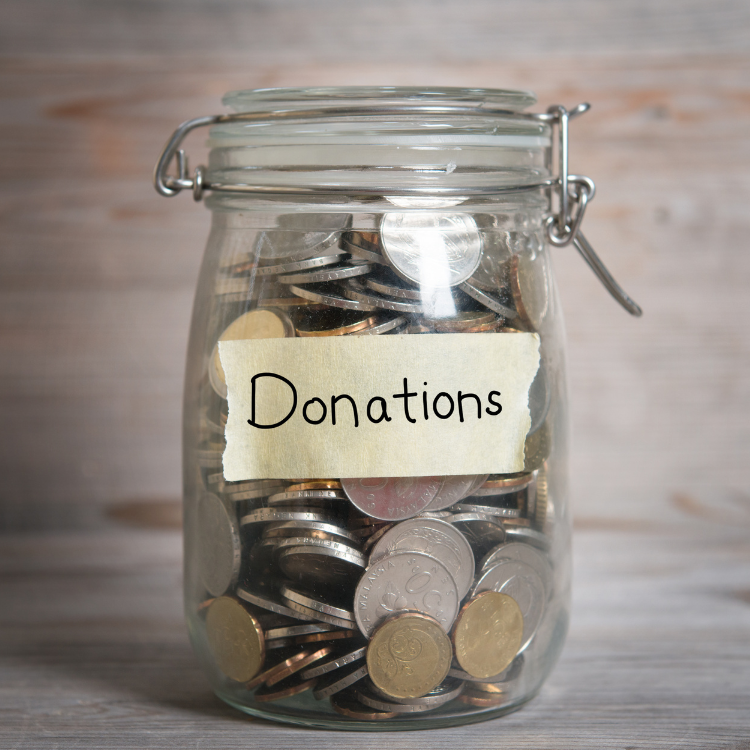You are here
- Home
- Blogs
- Anonymous's blog
- Trying to sustain practice in a shifting landscape of uncertainty
Trying to sustain practice in a shifting landscape of uncertainty
A Blog post by Dr Helen Britton
This is the first of a three part blog series with a specific focus on exploring the environment around the not-for-profit (NFP) sector and the challenges it presents for sustainability. In writing these blogs, my aim is to precipitate conversations, facilitate interactions, stimulate ideas and the sharing of insights with colleagues from organisations and those colleagues who work with them.There has never been a more urgent need for NFPs in the United Kingdom to take stock in this respect, and for those who work to support them in their endeavours.
This first blog takes a sweep across elements of the landscape that not-for-profit (NFP) voluntary and community organisations (VCSE) operate in. By so doing, it suggests that we take a deep intake of breath and ask ourselves the question: Is this sustainable?
The Economic Reality Check. The context in which all organisations operate has changed and continues to change. The rate at which this has been taking place has produced some steep curves on many graphs. Over the coming years, many Western economies are now likely to be facing long-term stagnation - a combination of high inflation and low growth. We know that we will not be able to fully identify, nor quantify, the human, social, economic and environmental implications of a future of higher inflation, rising prices, changes to taxation, new legislation, less disposable income and reducing levels of government support. The list goes on as do the implications for sustainability. This impacts all sector organisations whether they are public, private or voluntary and community based. It is as relevant for the not-for-profit sector as it is to for-profit business models. A mind-set that is focused on sustainability has never been more important than it is now.
The notion of ‘sustainability’ is often referred to as difficult to define. At its most empirical we describe it as the process(es) by which we can continue at a certain level. Not unlike any other over-arching, ‘catch-all’ conceptual device, it requires unpicking. In an eye-watering second, we can move across a continuum of complexity from sustaining global environmental resources; to economic viability; to social equity. We can think of sustainability as resting on four main ‘pillars’: human, social, economic and environmental. They all play crucial roles in the existence of the whole world. You couldn’t imagine supporting the portico of this building without the strength and underpinning of its columns. Yet, away from the impressive architectural metaphor below, we pay unequal attention to the four pillars of sustainability.

We know that we need to maintain the health of the natural environment and protect the planet from further harmful degradation, including through sustainable consumption and production. Managing its natural resource and fragile ecosystems requires taking actions on climate change, so that it can support the needs of the present and future generations. The environmental pillar aims to improve human welfare through the protection of natural abiotic capital such as land, air, water, and minerals. We seek to preserve a social capital by investing and creating services that constitute a sustainable framework for society and help to maintain and improve human capital in society. Being able to do all of this requires sustainable economic structures to make efficient use of assets to maintain their viability over time. Failing to adequately address all four ‘pillars’ weakens the whole structure.
The post-pandemic landscape is still being re-drawn. There is a myriad of the proverbial head winds that continue to impact the ability of organisations to sustain their practices in the short and long term. That applies if you are selling food, services, support or advice – for profit or not for profit. Sometimes the dynamics of business conflate to the point that the business – whatever that is – is unable to operate. The head winds render it unsustainable. The doors must close. The loss to the immediate and wider communities is almost impossible to calculate with its impact on the human and social capacities of those places.
Macro trends such as climate change, globalisation, demographic change and social inequality have created significant challenges to traditional business models, leading to necessitating often substantive changes in business practice orientations. We are witnessing the voluntary sector increasingly filings ‘gaps’ where government agencies and private businesses may have reduced their capacity or withdrawn their services completely.
We all know that many VCSEs have experienced long-term struggles, prior to the pandemic, with the challenges that increasingly more complex and competitive commissioning environments present for them and uncertainties around funding their provision. Many struggled to maintain or build financial reserves pre-pandemic; a position further exacerbated by pressures that have been coalescing post-pandemic and adding further challenges.

There are three main ways in which inflation is already, and will continue to, affect VCSEs: rising costs – particularly for staffing with increasing National Insurance contributions – depreciating incomes, and the impact on beneficiaries’ finances changing demand levels for services. For those of us who work with, and within, these organisations, the significance of these factors cannot be underestimated. Daily we witness a significant increase in the number of individuals accessing provision and a decrease, for many, in their income base to sustain that increase. This April saw the publication of the Charities Aid Foundation’s (CAF) UK Giving Report. It publishes survey data about the trends of the giving landscape for the whole of the previous year. It reported a significant reduction, in terms of levels of donations, volunteering and sponsorship compared to pre-Covid-19 pandemic levels representing an estimated 4.9 million fewer people donating to charity.
As we deal with increasing levels of complexity, in both our private and professional lives, we know that we need to address how we view sustainability for ourselves and the organisations we support. There is no one-size-fits-all approach. We cannot reduce complexity down to a single plug and play equation of convenience; as comforting as that may well be. Human, financial and physical resources will mean that some organisations may be able to empower a team to craft and control a sustainability agenda and the resourcing that it will require. Whilst many smaller organisations may struggle to mobilise the spare capacity to go beyond the more immediate levels of concern.
As a practitioner and researcher, who has worked in many, of what are euphemistically referred to as ‘hard to reach’ communities, I am aware of how challenging it can be to do a lot with a little that has become even smaller.
In the words of one of my colleagues...
We are used to being resourceful. Continuously having to be resourceful is exhausting my resources. How do I sustain that position?
Community Centre Manager for 25 years
I have always been passionate about how VSCEs enrich the very fabric of all our lives. Yet, in extolling their importance and significance, are we also not in danger of taking their continued existence for granted. I find myself increasingly concerned about the unrealistic levels of expectation placed on them to deliver a dizzying array of supportive services; irrespective of the headwinds that roll in. They are just expected to ‘get on with it’. For me, this challenges the very notion of their ability to sustain what they do and how they do it. Because something has always been there, in one form or another over time, it doesn’t mean that it will always be there. Seeing VCSEs close their doors for the last time, after years of servicing their communities, has been one of the hardest things I have had to witness in the past few years. Unfortunately, we will all be seeing more of this.
There is much written extolling the resilience, independence and vibrancy of VSCEs. Indeed, many of us have known that to be true for a long time. It is a true testament to the resourcefulness, tenacity, commitment and continued application from literally hundreds of thousands of people over many bumps in the road. This cannot be taken for granted. Every one of those individuals has their own set of personal as well as professional dynamics to deal with. The current economic climate is not a kind one.
Whether they are private, public or voluntary organisations, all leaders need to be aware of factors that have the potential to undermine their sustainability and embed sustainability into the fabric of their business model. The next blog makes several practical suggestions.
My next blogs in this 3-part series are coming soon...
The second blog suggests that increasing the knowledge base of factors, that influence sustainability and practices that support it, can be shared.
The third blog makes suggestions of what organisations might consider looking at in terms of their sustainability credentials.

Dr Helen Britton
Helen is an educational practitioner, researcher and entrepreneur. After starting her professional life in the chemical industry, she re-trained to teach mathematics and to develop her entrepreneurial interests in construction and property restoration. She has lectured in mathematics and Access to Science and Technology.
Helen has almost three decades of experience of designing and delivering innovative and inclusive courses and capital projects as part of multi-stakeholder initiatives within the United Kingdom.
7th June 2023


